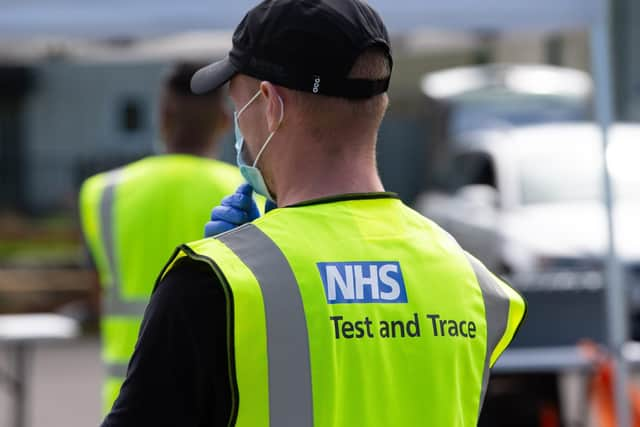How Calderdale's own test and trace system will work with the government's national scheme
and live on Freeview channel 276
It will see the borough’s own test and trace team act on data from the NHS Test and Trace system to reach contacts of people who have tested positive for COVID-19 if the national scheme has not been able to get a response from them.
Calderdale’s Director of Public Health, Deborah Harkins, said currently around a third of people contacted are not being reached by national track and tracers.
Advertisement
Hide AdAdvertisement
Hide AdBut a 25-strong council team will make contact with the missing people to inform them they need to isolate to complete the job, and doing it quickly as speed was of the essence.


Ms Harkin said the team is expected to make five contacts a day and will also support those who have been identified.
Both national and local schemes, working together, were crucial to stopping the virus spreading and reducing infections, she said.
It should not be seen as the council setting up its own test and trace system instead of the national scheme but a strengthened partnership.
Advertisement
Hide AdAdvertisement
Hide Ad“We need both – we don’t have the capacity to do it on our own.
“The way to bring the rate down is to test as many people as we can, identify them as quickly as we can, isolate them and contact their contacts.
“That is the way we are going to get this under control,” said Ms Harkins.
She also warned although the data received in recent days from the Government showed a reduction in case numbers they would rise again.
Advertisement
Hide AdAdvertisement
Hide AdMs Harkins said although the two systems would not officially be working in tandem until the end of the week or early next week, some work was already under way.
It will work by the national service providing Calderdale with the data for people who are not contacted within the first 48 hours.
The council-run scheme will then contact those people first asking them to call the local service back, making a second call if there is still no response and ultimately the test and trace team “will come and knock on the door”, she said.
There was no single reason why around a third of cases could not be contacted – for example, some people may not speak the language of the national service, people may see an unknown telephone number and be wary of calling it and some people were unable to answer their phone because they were out at work, said Ms Harkins.
Advertisement
Hide AdAdvertisement
Hide AdTrusted community representatives, including health partners like GP surgeries, would form crucial support to the council team which would be a mix of paid staff and volunteers who combined had the sort of local knowledge of their area that a national scheme could not have.
As well as voluntary and council staff who could provide help with languages, similar help was also being organised with private businesses – it was a whole community effort, she said.
Ms Harkins said there is no evidence that people in Calderdale are less likely to isolate than anyone else but a key thing that has changed from before the spike was that lockdown had eased.
Of people contracting the virus, Ms Harkins said: “We know we have got more people who work in jobs that increase the likelihood of them being exposed to the virus.
“They were working right through lockdown.
Advertisement
Hide AdAdvertisement
Hide Ad“Since lockdown eased they are still doing the job they were doing but the chance of being exposed to the virus is increased as people interact more.
“They are people who have been looking after us through this process,” she said.
Larger households in more densely populated areas made social distancing more difficult, said Ms Harkins.
Calderdale had ramped up testing – around 144 per 100,000 people as opposed to the national average of 105 per 100,000.
Advertisement
Hide AdAdvertisement
Hide AdThis would find more cases and the numbers would get worse before they got better, she said, mirroring the experience of places like Leicester who had experienced a spike in COVID-19 cases earlier.
Ms Harkins said the council was talking to the Government about having testing kits the contact tracers could take out with them to increase testing in high risk areas.
“Also we’re already testing all care home staff and we are planning to roll that out to other groups in high risk occupations,” she said,
The council was also talking to the Government about providing financial help to support people through isolation which meant they could not work, for example if they were on zero hours contracts or were self employed.
“They have heard the message,” she said.
Advertisement
Hide AdAdvertisement
Hide AdIt was important people continued to observe social distancing, wear masks where advised and followed advice on hand washing, not touching their face and following the “catch it, kill it, bin it” guideline for coughs and sneezes.